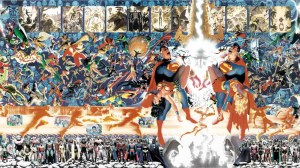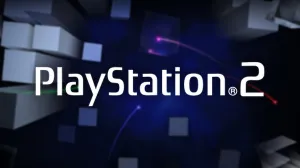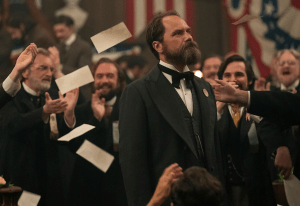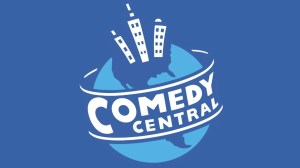DC Comics is going through something of a renaissance lately. The ’00s were a pretty great time to be a DC fan, but the publisher somehow fumbled everything with the New 52 of the ’10s and has taken years to get back to a point where DC fans are actually happy with things. “Dawn of DC” and “DC All-In” have brought the DC Multiverse to a place where it is not only more accessible, but also has found a way to make longtime readers happy. The Absolute books are amazing and have taken the tops of the sales chart, and characters like Superman and Wonder Woman have finally joined Batman when it comes to sales supremacy. One of the most exciting comics of “DC All-In” so far has been Justice League Unlimited, a book that teams DC writer extraordinaire Mark Waid with artists Dan Mora and Travis Moore (Moore has been DC’s best fill-in artist of the last few years; check out his work on Nightwing and Batman/Superman: World’s Finest) and made the Justice League feel important for the first time in ages.
Videos by ComicBook.com
However, if I’m being honest, Justice League Unlimited hasn’t really lived up to the hype in a lot of ways. The introduction of mysterious villain group Inferno was cool, but then we learned that they were just the Legion of Doom. On the surface, it seemed like Waid was giving readers another Justice League vs. the Legion of Doom, but things took a turn in crossover with World’s Finest titled “We Are Yesterday.” “We Are Yesterday” was confusing at times — it’s a story that is best read in one sitting instead of monthly — but the story’s ending has made me more excited for DC than ever. “We Are Yesterday” has left DC with an embarrassment of riches, and it could help “DC All-In” cement itself as the best DC publishing initiative ever.
“We Are Yesterday” Brought Back Some of the Greatest Version of DC Heroes Ever

“We Are Yesterday” is complicated, but DC has always been very complicated. In Absolute Power, superpowers got switched around, and Gorilla Grodd gained the telepathic powers of Martian Manhunter, allowing him to use his powers to move mentally through time, with the help of Air-Wave II, who he had used his powers on to get the young hero on his side. He recruited the Legion of Doom, and brought them to the present, calling themselves Inferno. Inferno attacked the Earth in a bid to destroy the Justice League. Grodd then used his time travel shenanigans to throw Robin to the future, which causes a weird time paradox where Robin both did and didn’t get back from the future, which leads to the Superman, Batman, and Dick Grayson of the present showing up in the past and vice versa. This led to some back and forths between the heroes and villains, with Grodd trying to harness the power of the Omega Rift, where Darkseid died in DC All-In #1, until Air-Wave II was able to bring everyone back to the present, but the heroes had some allies they didn’t have before — members of the League from across space and time. They were able to defeat Grodd, stopping him from gaining ultimate power, but the time lost versions of the League ended up staying in the present.
This is an extremely interesting development that could pay off for DC. Waid has brought back the concept of “Hypertime” to DC with this story. “Hypertime” was created in the ’90s as a way to have something like the DC Multiverse around, allowing creators to use every version of DC characters despite their canon status. Since the return of the DC Multiverse, “Hypertime” has been kind of surplus to requirements, but “We Are Yesterday” brings it back in full force. Waid has left versions of DC’s past in the present and that opens a lot of interesting story ideas. “Hypertime” is one of those ideas that was never used to its fullest extent, and “We Are Yesterday” gives creators a chance to play with it. There are now several versions of Superman, several versions of Batman, Batman Beyond, multiple different Flashes, and more. This gives creators a lot of leeway; they can use these old versions of heroes in new ways, as well as finding a way to use “Hypertime” in new ways. DC’s canon has become remarkably tangled, but the return of “Hypertime” allows creators to bring anything in that they want from any version of DC. Want to see the original Earth-Two Superman? You could. The old pre-Crisis Superman? That’s a possibility. Want to see mod Wonder Woman meet modern Wonder Woman? It can happen. Not only does Justice League Unlimited have multiple versions of League members to bring in, but DC’s creators have a whole new toy to play with in the continuity tool box.
“We Are Yesterday” Opens So Many Doors

“DC All-In” has been wildly successful at making DC a sales contender for the first time in a long time. One of the best things about “DC All-In” is that creators have been able to use the past of DC to inform the present. The stories have gotten better because creators have the freedom to use multiple ideas from DC’s past. “We Are Yesterday” is taking that approach to its greatest extent.
“Hypertime” is an idea that never really got used as well as it could have been, and “DC All-In” is the best place for it. It will allow creators to take any version of any character and use them in stories with the mainline versions. This opens up a lot of potential for every book in the DC line. Waid bringing a load of DC heroes from across time and space to the present also gives Justice League Unlimited the chance to actually lives up to its name. Waid has given the book — and DC Comics in general — the ability to become unlimited in a way it’s never been before.
How do you feel about “We Are Yesterday” and its impact? Sound off in the comments below.









